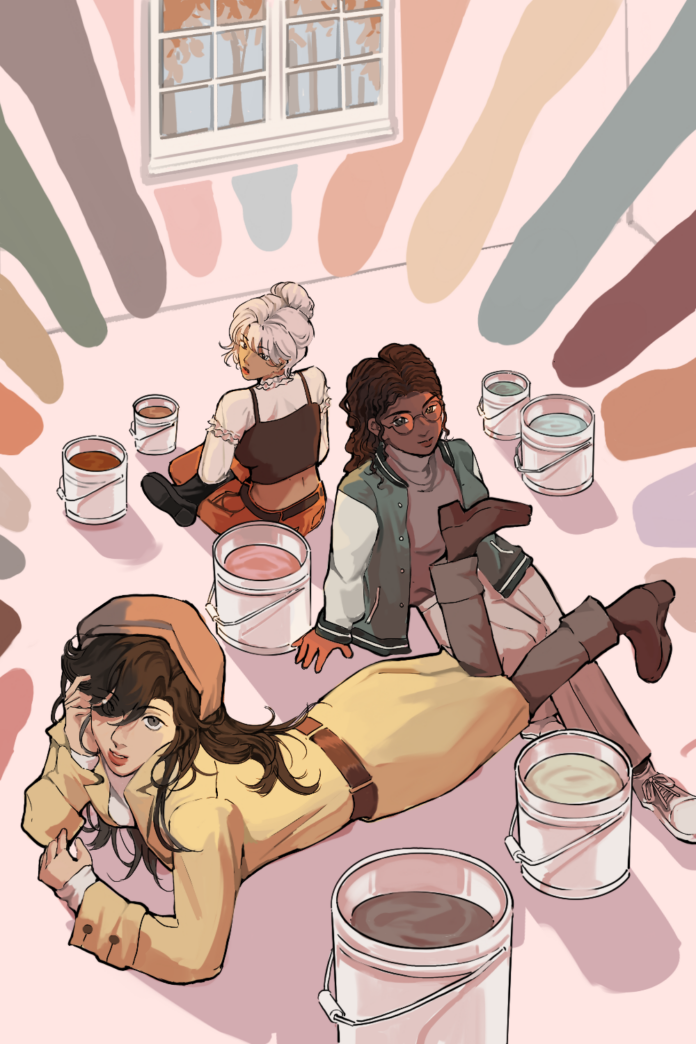Far from being basic, neutral colors carry a vibrance and meaning of their own
By JULIE HUANG – arts@theaggie.org
Autumn is a picture-perfect study of the best that neutral colors have to offer, as students don on cream-colored sweaters and black leather jackets while crispy brown leaves float off their branches. Far from being associated with any one period of time or place, neutrals are known for being everywhere, in everything! From clothing to home decor to web design, neutral colors are always a safe bet.
Due to their ubiquitous nature, colors like white, brown, black and gray are often perceived as the basic choices — default options chosen when one wants to shy away from any strong feelings or messages. Though there’s some truth to these perceptions, neutral hues can be so much more than a blank slate, with the potential to convey unique feelings and moods (apart from an obvious sense of neutrality).
To begin, black and white hues will never be irrelevant in daily life due to the universal effects of their ability to symbolize a vast range of meanings, especially when discussed as a pair of colors. Although often viewed as opposites, black and white carry similar associations of simplicity, formality, mystery and spirituality — all broad and expansive concepts that cover the color duo’s extreme range.
Black and white on their own each convey the image of visual purity, either the absence or the totality of all colors. Together, these pristine colors have become representative of the concept of duality, discussed alongside long standing binaries of human fascination such as life and death or good and evil.
Gray is known as black’s less-intense counterpart, but its subdued nature does not make it any less useful in daily life. When it comes to everyday objects like personal technology, kitchen appliances and automobiles, the color gray is easier than pure black to keep clean of dust and fingerprints. This practicality has also contributed to gray’s aesthetic reputation as a staple color whenever a brand identity or marketing requires a sense of unpretentious professionalism.
Similarly to gray’s relationship with black, offshoots of white such as cream, ivory and tan may also be classified as neutrals. There is a slight variation from the ever-versatile white, making them applicable to every aspect and setting of human life. These hues are hallmarks of exterior and interior design, from walls to furniture to rugs and lampshades. Off-white shades suit both formal and casual types of clothing, imbuing those pieces with a less intimidating version of the elegance and purity that white conveys.
Due to the susceptibility of being stained or dirtied, there is a sort of daring in using off-white shades in clothing and personal items like bedding and rugs. Making that choice subtly asserts a sense of sophistication and serenity, making the space all the more comfortable.
Last but not least of the neutrals, brown is the warmest in hue and in associated meanings. Linked to earthiness, stability and humility, the color brown covers the span of all that is warm and comforting. Consciously invoking these associations in personal life by choosing brown hues enhances any welcoming feelings already present, supplemented by the color’s connection to the strength and dependability of durable materials like wood and leather. Although not as iconic as black, white and their related shades, brown in its many forms is just as timeless a neutral, owing to the fact that stability, comfort and security will always be sought after and valued.
When all is said and done, the versatility and timelessness of neutral colors may end up contributing to the popular perception that they are default choices to fall back on. However, it cannot be denied that neutrals have strong, recognizable identities of their own. They can, in fact, function as the first and best choices when it comes to creating certain moods and atmospheres. Whether standing on their own or seamlessly interacting with other colors, neutrals have the ability to bring their unique feel into any situation, time and place in a way that is anything but basic.
Written by: Julie Huang — arts@theaggie.org





